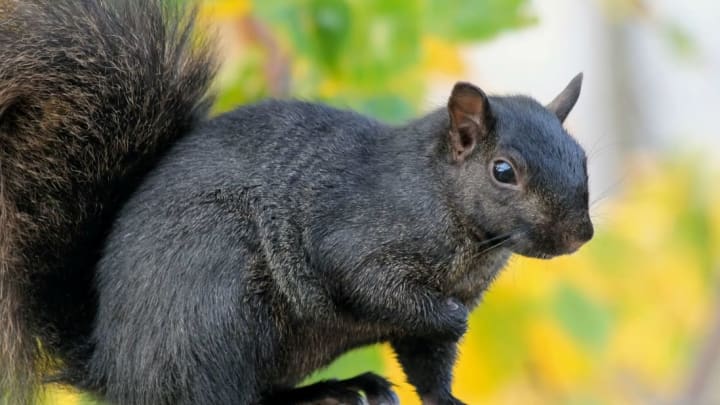It can be something of a surprise to see an animal sporting a fresh coat of paint. Blue lobsters occasionally surface after being caught in traps. A pink dolphin was spotted in Louisiana in 2007 (and several times since). In the Chinese province of Shaanxi, a cute brown and white panda greets zoo visitors.
Another anomalous animal has joined their ranks. Black squirrels have been spotted in both the United States and the UK, and now scientists believe they know why.
Like many animals with unusual color schemes, black squirrels are the result of a genetic detour. Researchers at Anglia Ruskin University, Cambridge University, and the Virginia Museum of Natural History collaborated on a project that tested squirrel DNA. Their findings, which were published in BMC Evolutionary Biology, demonstrated that the black squirrel is the product of interspecies breeding between the common gray squirrel and the fox squirrel. The black squirrel is actually a gray squirrel with a faulty pigment gene carried over from the fox squirrel that turns their fur a darker shade. (Some fox squirrels, which are usually reddish-brown, are also black.)

Scientists theorize a black fox squirrel may have joined in on a mating chase involving gray squirrels and got busy with a female. The black fur may offer benefits in colder regions, with squirrels able to absorb and retain more heat, giving them a slight evolutionary edge.
In North America, black squirrels are uncommon, with one estimate putting them at a rate of one in every 10,000 squirrels. In 1961, students at Kent State University in Ohio released 10 black squirrels that had been captured by Canadian wildlife authorities. The squirrels now populate the campus and have become the school’s unofficial mascot. Their coloring might help them hide from predators, which might come in handy at Kent State: The campus is also home to hawks.
[h/t The Guardian]
